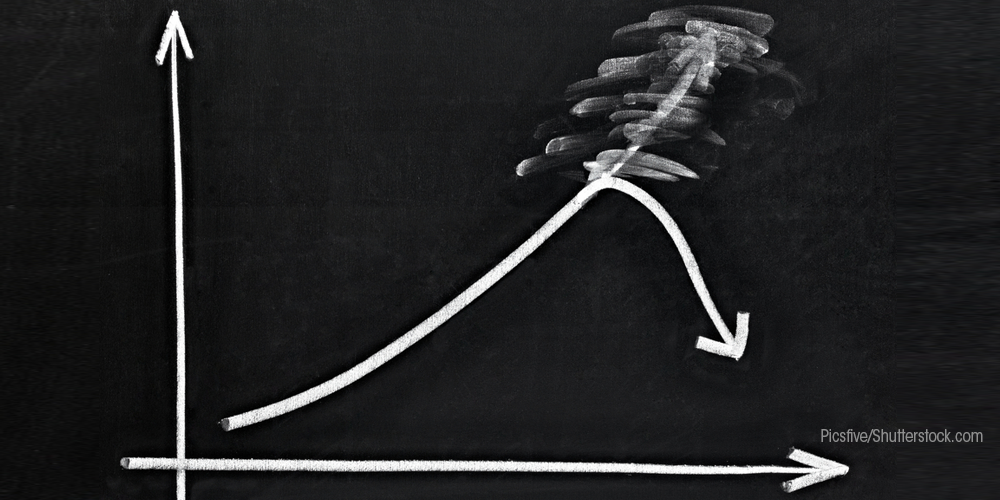Economies Suffering Unemployment and Loss by COVID-19
Healthcare providers and payers are keeping an eye on unemployment rates across the country and in communities that have been affected the most because the rates will have an effect on the use of medical services and insurance coverage. Here is a look at some of the economies most affected.

Healthcare providers and payers are keeping an eye on unemployment rates because they will likely have a ripple effect on the use of some types of medical services and on insurance coverage. Payers are getting ready for a major shift from employer-based coverage to Medicaid and ACA markets as the number of Americans who are unemployed climbs.
Since the U.S. first witnessed significant community spread of the coronavirus in March, each week has brought a new life-changing economic news. From the skyrocketing unemployment claims, to new estimates of contracting gross domestic products (GDP) in the first quarter of 2020, there has been little rest from the growing awareness that COVID-19 is creating damage on both lives and livelihoods.
These economic changes have not been equally distributed around the country, however. According to a report in Brookings, different structures of local economies and the types of industries immediate closures affect most would combine to make some communities more vulnerable than others in the country to the COVID-19 downturn. In addition, the path of viral infections within U.S. borders-affecting parts of the West Coast and Northeast first, before spreading more widely throughout the country-caused some city and state leaders to act before others in shutting down nonessential businesses.
Related: COVID-19 Shows the Need for Global Perspective on Healthcare
New data from the U.S. Bureau of Labor Statistics (BLS) shows evidence of how responses to COVID-19’s spread began to affect metropolitan economies through mid-March. BLS derives the data from the same sources that underlie its monthly employment report for the country as a whole. On April 3, the report indicated the U.S. economy lost 701,000 jobs between mid-February and mid-March, and the unemployment rate increased from 3.5% to 4.4%.
From February to March 2020, the 191 metro areas tracked in the analysis (those with populations of at least 250,000) shed a combined 591,000 jobs-about 84% of the national total, the report says. While that was only 0.5% of the total number of jobs in these metro areas, it represented the tip of the iceberg of employment losses that began to rapidly accumulate in late March as government-mandated business closures swept the nation. Nonetheless, job loss was widespread, affecting 164 of the 191 metro areas.
These job losses were largely concentrated in a set of very large metro areas, several of which were early U.S. epicenters of the pandemic such as New York and Detroit and/or places where governments acted early to limit community spread. Some of these cities included Los Angeles, San Francisco, and San Diego. The 10 very large metro areas experiencing the largest absolute job losses together accounted for more than half of total job loss (318,000 jobs) across the 191 metro areas.
Many of the largest metro areas were also among those experiencing the steepest percentage drops in employment from February to March, including Baltimore, Cincinnati, Providence, R.I., and Dallas. Dallas and Texas as a whole were not early COVID-19 hotspots or quick to enact shutdowns, but rapid declines in oil prices as the virus spread around the globe affected the local energy industry negatively. At least through mid-March, the overwhelming majority of job losses occurred in very large metro areas (those with populations of at least 1 million), and their collective rate of job decline was more than double that of large and midsized metro areas.
As COVID-19-related job losses mounted, more residents of the nation’s metro areas joined the ranks of the unemployed. While initial claims for unemployment insurance began to spike after the BLS surveys were conducted, these results suggest that metro areas were beginning to experience rising unemployment by mid-March.
Between February and March, 124 of the 191 metro areas saw their unemployment rate jump by at least one-tenth of a percentage point compared to just one metro area between January and February. These changes were more regionally concentrated than total job changes, and predominantly affected Western metro areas that either took early measures to contain the virus’s spread, like Seattle, or had economic specializations such as tourism (Las Vegas, Reno, Nev.) and energy (Bakersfield, Calif., Beaumont, Texas) that faced early challenges from the crisis.
In addition to these regions, several agricultural and manufacturing-oriented metro areas that employ large immigrant populations-in California’s Central Valley, along the Southwest border in Texas, and in the Florida citrus belt-experienced among the largest jumps in unemployment from February to March. This may reflect the particular susceptibility of these regions to falling domestic and overseas demand for their output, as well as vulnerabilities among their large migrant workforces.
Rather than job declines, unemployment rate increases did not skew toward very large metro areas. It may be in the largest labor markets, some workers were able to shift from declining sectors of the economy, like hotels and restaurants, to those that were still hiring, such as technology and healthcare, in March. Smaller metro areas may not have afforded their workers the same diverse sets of opportunities as the economic crisis spread, the report says.
While the March data reflects the early warning signs of a looming economic crisis, forthcoming data from late March and early April-when most states enacted more widespread shutdowns-will show the fuller extent of the economic devastation metropolitan communities are now experiencing.
Extending the Capabilities of the EHR Through Automation
August 2nd 2023Welcome back to another episode of "Tuning In to the C-Suite," where Briana Contreras, an editor of Managed Healthcare Executive, had the pleasure of chatting with Cindy Gaines, chief clinical transformation officer at Lumeon.
Listen